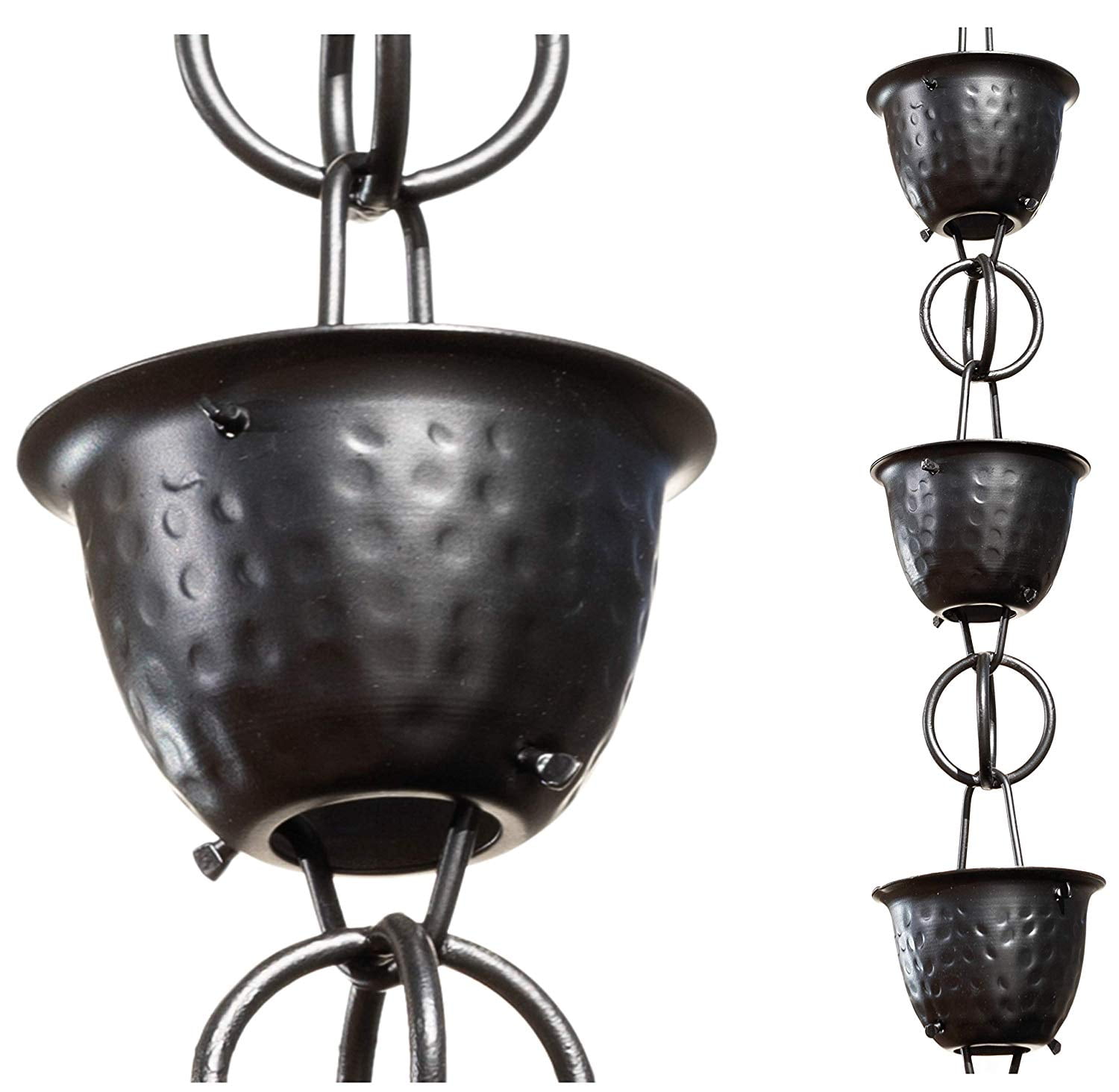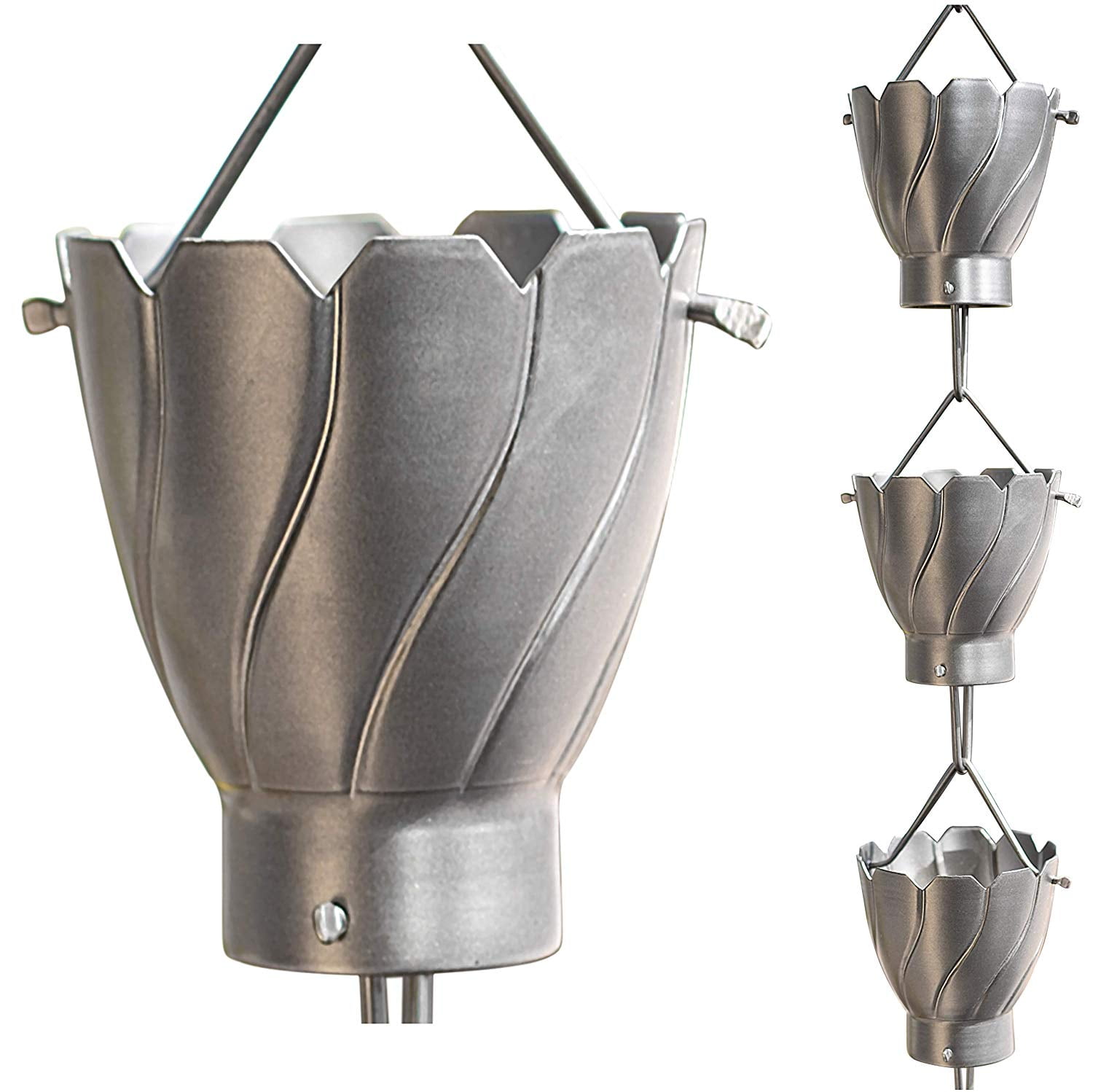

The chain has to hang straight down rain can't cling to a chain held at an angle. Of course, you could be so creative as to actually hang manufactured chain. Don't forget to check for beautiful handcrafted chains. Natural items like pine cones can decorate a rain chain for a few seasons. They're made from repurposed household items, dollar and thrift store goodies, and hardware store basics like copper tube. Pinterest, YouTube, and Google Images are loaded with creative concepts for rain chains. If there is no stub on your gutter, this insert flange and tube is highly recommeded.Ĭrafters and artistic gardeners have embraced rain chains and come up with many creative options. They say it can direct rain onto the chain more effectively than the standard stub. Rain chain vendors also sell an insert flange that drops in place for hanging the chain. As Mark points out, if the tube is scratched or unfinished, you can buy touch up paint in the hardware store to match common gutter material. This tube help direct water down instead of allowing it to creep along the underside of the gutter before dripping. This kind of installation is demonstrated by Mark Crovelli of Gutter University ( click here for video.) There may be a piece of tube coming down from the gutter when you remove the downspout. Chains can hang from a large "V" shaped piece of heavy wire inserted from above. These keep the chain in place during windy storms, to help control the runoff.Ī rain chain can be added to an existing gutter system by simply removing the downspout and hanging the chain in place.

The other is a basin, weight, or bucket for the bottom of the chain.

It is a drop in flange and short tube that helps ensure that rain flows directly out of your gutter and into the chain. Rain chain vendors also offer two accessories worth considering. Brass, enameled, and aluminum cups are other choices in metals. Copper is popular material and a natural one for an architectural element. The standard length is about eight feet, and some can be lengthened at a "per added foot" price. Rain chains are sold on the internet, of course, and you may see them at high end garden centers*. Vincent Longo Custom Builders explains ( click here for video) how a rain chain was a much more aesthetically pleasing choice than a downspout on a stone house with copper gutters. In either case, a rain chain is certainly more interesting than a basic, boring downspout. But rain chains can fill a rain barrel too. Like a downspout, a rain chain can end over a standard splash block that directs water away from the house foundation. On modern Western homes, a rain chain may replace the standard utilitarian downspout that we usually try to hide (with little success) or blend in (poorly) to the house trim and siding. Chains can simply hang free, or may be attached in place at the bottom to a container, stone, or drain. The catchment at the bottom of a rain chain can serve to either collect and hold, or drain away, the flow. The cups hang one under another, each a few inches wide at the top and narrow at the bottom, so that water flows from the bottom of one cup into the mouth of the one under it.

Cup shapes, like the one shown here, can be made to resemble flowers, tiny buckets, deep cups or other pretty shapes. The surface tension of the water cause it to grab the rings and cling to them as it flows to the ground. Rain chains consist of a string of rings or cup shapes. Heavier rain gushes and gurgles like a temporary waterfall.
#RAIN CHAIN FULL#
Light rain trickles down and ripples the surface of a barrel or basin full of water. The kusari-doi turns the rain and the collection area into aesthetic garden elements while the chain serves a practical purpose. From the edge of a Japanese roof, the "kusari-doi" directs rainwater into a barrel, drain, or basin, or onto a stone slab. Rain chains are a traditional element in southern and western Japan.


 0 kommentar(er)
0 kommentar(er)
